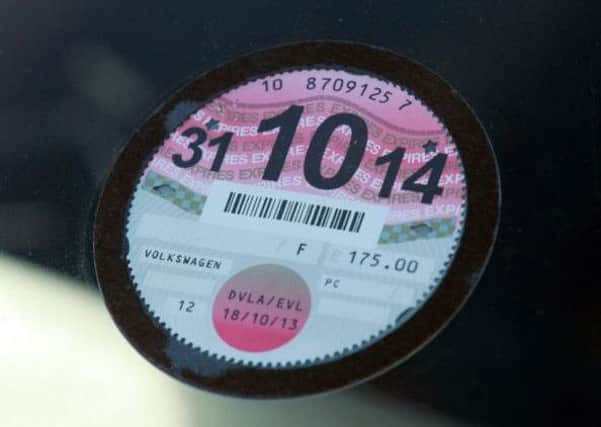DVLA reports £93m lost revenue following ditching of tax disks


The organisation, which was fearful that the impact of the scrapping of the tax disc would lead to a loss in revenue due to increased evasion, is now concerned the loss has proved to be even greater than the Government’s estimate over the course of 2015.
The DVLA’s newly-published annual report shows revenue from vehicle excise duty has fallen by £93m in the year since the need for a paper disk was scrapped.
Advertisement
Hide AdAdvertisement
Hide AdA year ago the Department for Transport conducted a roadside survey which projected that about 1.5 per cent of all vehicles on the road were unlicensed – the equivalent of about 560,000 vehicles – a rate of 1.4 per cent unlicensed vehicles, compared with 0.6 per cent in 2013 – or the equivalent of 210,000 vehicles.
As a result the Department’s statisticians estimated a loss to the exchequer of around £80 million. In Great Britain specifically they estimated annual losses would rise from £35m in June 2013 to £78m in June 2015.
In order to understand the true extent of the evasion problem, the RAC believes another roadside survey of unlicensed vehicles should be carried out this summer – a year earlier than it would normally be undertaken – so the Government can get an up-to-date assessment of the evasion situation.
RAC spokesman Simon Williams said: “It is worrying that the reduction in revenue from vehicle tax has exceeded the Government’s own estimate. Some may argue that a £93m loss is only £13m higher than expected, this represents an increase of £58 million on the corresponding period before the tax disc was abandoned and far exceeds the £10 million savings arising from no longer issuing tax discs. This loss is a significant sum and one that merits further investigation.
Advertisement
Hide AdAdvertisement
Hide Ad“While there are several factors which may have adversely contributed to a reduction in revenue including unfamiliarity with the new system and greater numbers of ‘cheaper to tax’ low carbon emission vehicles being taxed, we need to fully understand how great a part evasion plays. We therefore urge the Department for Transport to carry out another roadside survey of unlicensed vehicles this year to fully assess the untaxed vehicle situation. If this were to find that the number of untaxed vehicles is still at the same rate as when the last survey was conducted or, worse still, has increased, then action needs to be taken urgently to counter this.”
In September 2014 the RAC estimated the Treasury could lose up to £132m** on top of the £35m the DVLA said was lost from evasion the year before, making for a total loss of £167m. This was based on vehicle tax evasion following a similar path to the number of uninsured drivers of which there are believed to be around one million illegally using Britain’s roads.
“Now that paper tax discs have disappeared from the windscreen of vehicles, payment is logged within the DVLA database and the country’s network of automatic number plate recognition cameras are relied upon to catch motorists who avoid paying – deliberately or not, together with a debt collection agency which is used to chase non-payers.
“As these same cameras are also used to catch uninsured drivers, of which there are estimated to be over a million, we felt it was reasonable to model the number of car tax evaders on this figure which showed us that lost revenue from evaders could increase dramatically.
Advertisement
Hide AdAdvertisement
Hide Ad“It would be extremely worrying if we were to find that car tax evasion has increased from the 560,000 figure estimated in June 2015. We just hope that this doesn’t prove to be the tip of the iceberg and that the figure does not keep on rising, especially as the DVLA had predicted the new system would lead to savings of £10m.”